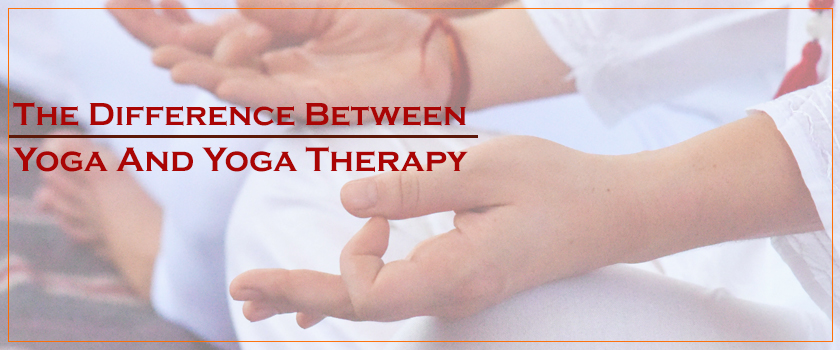
The Difference between Yoga and Yoga Therapy
Posted On : 01 June 2018.
Posted By : Yogi Mahesh Chetan.
Yoga, an ancient practice of wellness practised in India for thousands of years, creates a balance between mind, body, and soul through yoga asana, breathing exercises, pranayama, and meditation. Yoga is all about self-awareness or oneness with yourself. When people hear about yoga, the first and foremost picture that comes into mind is either skinny models performing intense yoga asana or people sitting in a Sukhasana pose. However, digging deeper inside unfolds many layers that lead to various benefits, including physical and mental health.
Whatever the reason for practising yoga, even a few minutes can be therapeutic, leading to a new branch of yoga: yoga therapy. Swami Kuvalayananda coined the term yoga therapy for the first time in 1920. He generated a new way of thinking and fostered scientific research showing how yoga impacted various medical ailments. However, there are specific ways in which yoga and yoga therapy differ.
Application of Yoga and Yoga Therapy
The significant difference between yoga and yoga therapy is the way it is applied. Talking about yoga is all about a series of yoga poses, including pranayama and meditation, which leads to overall physical and mental benefits. Yoga is generally taught in groups of people.
When we talk about yoga therapy, we are talking about an individual approach based on the person's medical condition. The yoga therapy session is designed to keep the client's condition or the patient's illness in mind.
Yoga Therapy works keeping your goal in mind
In yoga, your teacher designed the sequence, keeping the needs of every student in mind. Yoga therapy targets a specific ailment and works according to that. It is not about teaching yoga; it is all about utilizing every yoga technique to remove the ailment and restore the client's health. Yoga therapy for depression will be different from yoga therapy for back pain. Unlike yoga, yoga therapists generally specialize in a particular disease.
Yoga Therapy alters the Yoga poses as per your body's needs
In yoga therapy, therapists know about your needs and then adjust and modify the pose according to your body's needs using specific yoga props and alignments. Yoga therapy is a broad spectrum suitable for people with specific ailments. It is your therapist's job to understand the client's needs and determine what they can do to help them.
The therapist ensures you will get the full benefits of every yoga pose. A yoga class mainly focuses on techniques or methods that benefit the overall class, not just the individual one.
Expertise of the Yoga Therapist
A yoga therapist requires a lot of training, even more than 500-hour yoga teacher training. Since a yoga therapist has to deal with many medical ailments, a yoga therapy program is done with the help of a medical professional, doctor, psychologist, etc. These professionals provide them with an in-depth knowledge of anatomy, applied physiotherapy, and medicine in yoga. On the contrary, a yoga class does not have such a setup and includes a yoga teacher explaining and teaching about yoga poses.
A yoga therapist increases the awareness about your body, which helps in the rapid healing of your body. Hence, the role of a yoga therapist is based on different skill sets, focuses, and education. A yoga class is based on more of a teaching methodology. In contrast, yoga therapy is based on healing and treating different conditions. It offers them an alternative method of recovery through the help of yoga.
